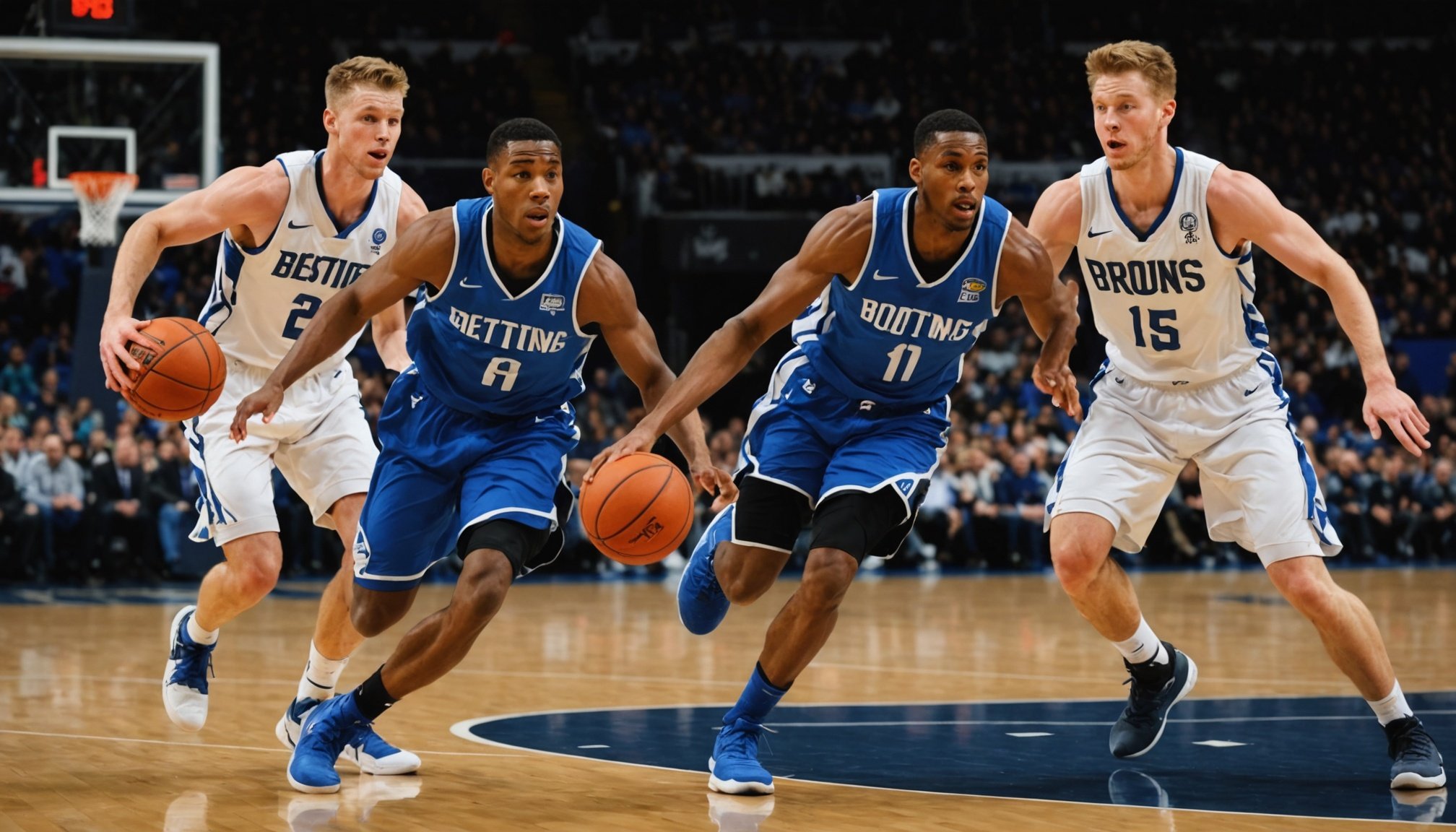Strategies for Enhancing Performance
Basketball teams in the UK need to consider performance strategies that are adaptable and tailored to meet mid-season demands. Analyzing current performance metrics is a cornerstone of this adaptation. By scrutinising game statistics, teams are able to set specific goals, such as improving shooting accuracy or reducing turnovers. Such data-driven insights enable a deeper understanding of performance gaps.
Implementing tailored training routines becomes paramount to bridge these gaps. This involves addressing weaknesses identified during analysis. For instance, if a team struggles with defense, special drills can be introduced to enhance agility and tactical awareness. UK basketball teams that integrate these routines often see substantial improvements.
Also read : Maximizing court awareness: unique techniques for uk basketball players to sharpen peripheral vision
Another strategy involves actively incorporating feedback from coaches and teammates. It’s crucial to foster an environment of open communication. Feedback helps players understand their role and adjust their style of play. Coaches can provide video analyses demonstrating effective mid-season tactics, offering players a visual roadmap for improvement.
To truly excel, combining these diverse strategies ensures a holistic approach to boosting team performance. Beyond statistics and training, communication and feedback are vital to create a resilient team capable of facing any challenge mid-season.
Have you seen this : Enhancing court awareness: top strategies for uk basketball players to elevate spatial vision
Key Exercises for Physical Conditioning
Physical conditioning is paramount for athletes seeking to enhance their basketball performance. This section highlights key exercises that focus on improving strength, agility, and endurance.
Strength Training Regimens
For effective basketball training, incorporating strength training is essential. These regimens build core muscle groups crucial for powerful performance on the court. Exercises such as squats, lunges, and deadlifts help develop lower body strength, which is vital for jumping and defensive plays. Upper body workouts, like bench presses and push-ups, enhance shooting capabilities and stability.
Agility and Speed Drills
Agility and speed are vital attributes for basketball players. Implementing drills like cone drills, ladder exercises, and shuttle runs can significantly improve an athlete’s quickness. These drills not only boost speed but also enhance balance and directional control, allowing players to maneuver effortlessly during matches.
Endurance Building Activities
To maintain peak performance, endurance training is crucial. Activities such as interval running, swimming, and circuit training help to boost cardiovascular health and stamina. Building endurance ensures that players remain energetic and effective throughout the game’s duration, especially during those crucial late-game moments. These exercises, woven into a balanced training regimen, support comprehensive skill development on the court.
Mental Conditioning Techniques
In the realm of sports psychology, mental conditioning is a vital tool for enhancing athletic performance. Developing a pre-game mental routine can significantly boost an athlete’s focus. This routine might involve focus techniques such as deep breathing and setting specific, achievable goals. By anchoring themselves in these practices, athletes can transition into a suitable mental state for peak performance.
Visualization techniques also play a crucial role in mental conditioning. Athletes often visualize themselves successfully executing their skills, which helps in creating a mental blueprint. This mental rehearsal allows the brain to become familiar with the desired outcomes, improving the likelihood of replicating them during actual events.
Additionally, incorporating mindfulness practices can assist in managing stress during games. Techniques like meditation or mindfulness breathing exercises can help athletes remain calm and composed under pressure. By being present in the moment and not succumbing to stress, athletes can maintain their focus, making effective decisions even in high-stakes situations.
Emphasizing these mental conditioning strategies not only enhances performance but also builds resilience, ensuring athletes are prepared both mentally and physically when they face competitive challenges.
Nutrition Strategies for Peak Performance
In the realm of sports nutrition, implementing effective nutrition strategies can markedly enhance the performance of basketball players. Nutritional planning is key to optimising energy levels, aiding recovery, and maintaining overall health. Let’s delve deeper into the critical components of nutrition for athletes.
Importance of Hydration
Adequate hydration is crucial for sustaining energy levels. But why is it so important? Hydration helps regulate body temperature, maintain joint lubrication, and transport nutrients to cells. Basketball players should prioritize regular fluid intake to prevent dehydration, which can lead to decreased performance and increased fatigue. Water and electrolyte-rich drinks are excellent choices to counterbalance the loss of fluids through sweat.
Pre-game and Post-game Meals
Pre-game meals should focus on providing the energy required for peak performance. Carbohydrates are pivotal as they fuel intense physical activity. A balanced pre-game meal might include whole grains, fruits, and lean proteins. After the game, it is equally important to consume nutrients that aid recovery. Proteins will help muscle repair, while carbohydrates replenish glycogen stores.
Nutritional Supplements for Recovery
For athletes needing extra support, certain nutritional supplements can be beneficial. Supplements like branched-chain amino acids (BCAAs) and protein powders promote muscle repair and growth. Always consult a nutritionist to tailor these supplements to individual needs, ensuring safe and effective use.
Injury Prevention and Management
Injury prevention is crucial for maintaining optimal performance and health in sports. Effective warming up routines significantly reduce the risk of sports injuries. Starting with light aerobic exercises, such as jogging or skipping, helps increase circulation to the muscles. This should be followed by dynamic stretching to prepare the body for physical activity, which enhances flexibility and reduces muscle stiffness.
Cooling down post-exercise is equally important. It aids recovery by gradually lowering the heart rate and allowing the muscles to relax. A combination of gentle stretching and slow-paced activities can help mitigate the onset of soreness.
Recognizing signs of overtraining is vital for preventing injuries. Symptoms like persistent fatigue, irritability, or a drop in performance may indicate that the body is overstressed. In such cases, adjusting the training load by incorporating rest days or reducing intensity can be beneficial.
Incorporating recovery techniques into regular routines is essential for injury management. Techniques such as foam rolling, massages, and adequate hydration promote muscle repair and alleviate discomfort. Ensuring sufficient sleep and nutrition supports overall recovery and keeps the body resilient against future injuries. Implementing these strategies properly helps athletes maintain their form and reduce injury frequency.
Insights from Coaches and Players
Mid-season in sports presents unique challenges and opportunities for teams and athletes alike. Coaching insights and player experiences are invaluable for understanding how to successfully navigate this phase.
Interviews with Experienced Coaches
From interviews with experienced coaches, it’s evident that tactical adjustments are paramount. Coaches frequently mention the importance of mid-season adaptations in strategy to counter the strengths of upcoming opponents. By tweaking formations, or sometimes introducing innovative plays, coaches can significantly impact a team’s performance.
Case Studies of Successful Players
Looking at case studies of successful players, many highlight personal mid-season adaptations as critical to their achievements. Some players shifted training focuses, while others adapted their playstyle to enhance team synergy. These shifts not only boosted their personal performance but also inspired team members to elevate their game.
Statistical Analysis of Mid-season Performance
A review of statistics from various sports illustrates effective strategies during mid-season. Data indicates that teams implementing coaching insights and prioritising individual player experiences often see upward trends in performance metrics. Players who actively engage in mid-season adaptations, like altering their fitness routines, tend to experience fewer injuries and peak at critical periods.











